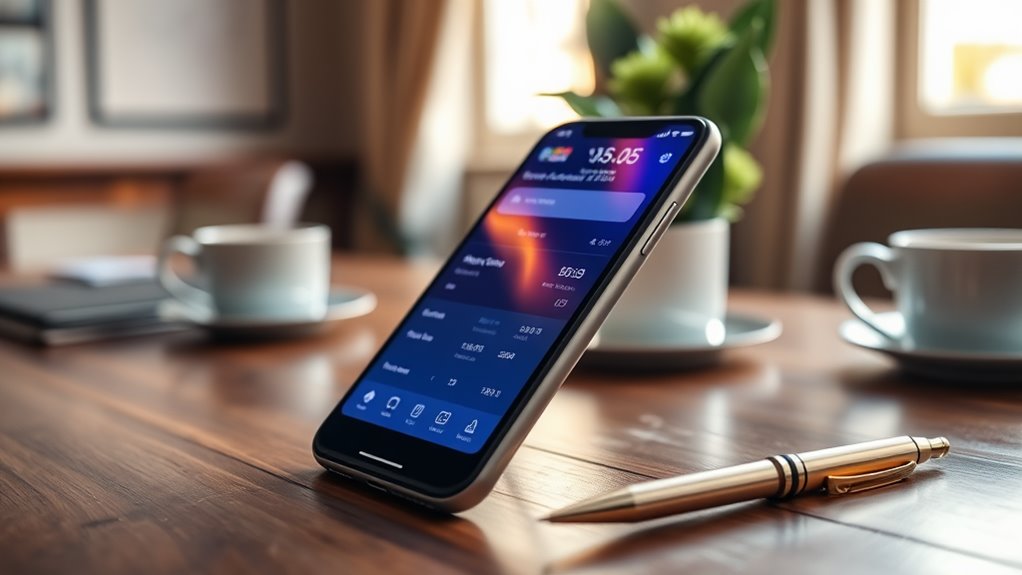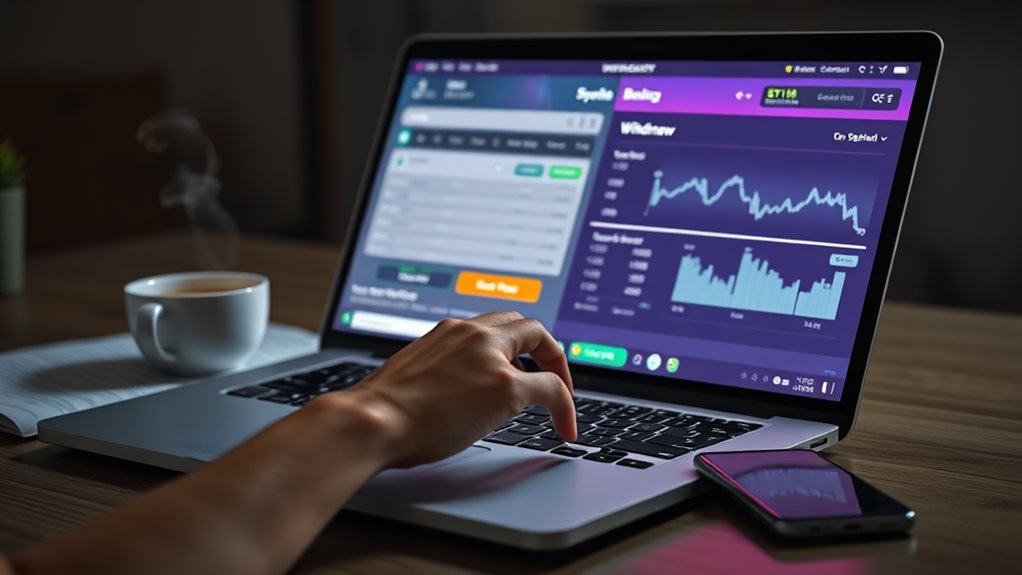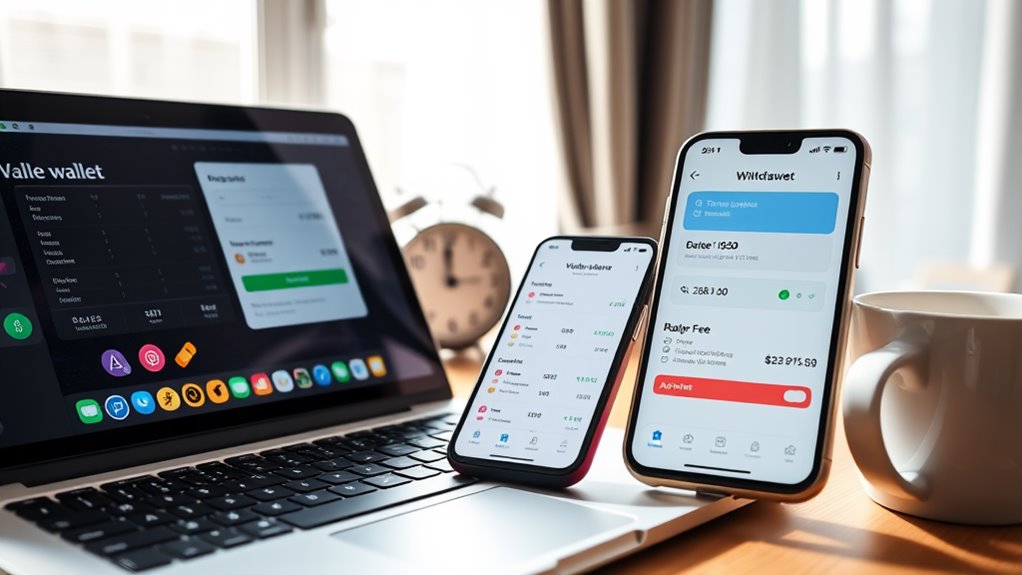
How to Withdraw Crypto to a Bank Account: A Step-by-Step Guide
Converting cryptocurrency to cash requires several key steps. First, select a reputable exchange like Coinbase or Binance that supports bank withdrawals. Create and verify your account with personal identification. Link your bank account through the exchange’s verification process. Convert your crypto to fiat currency, then initiate a withdrawal to your bank. Consider fees, processing times, and security measures like two-factor authentication. The complete process typically takes 1-5 business days depending on your chosen method.
Key Takeaways
- Choose a reputable exchange that supports fiat withdrawals and verify your account through their KYC process.
- Link your personal bank account to the exchange, ensuring the name matches your verified exchange account.
- Convert your cryptocurrency to your desired fiat currency (USD, EUR, etc.) on the exchange platform.
- Initiate a withdrawal to your bank account by selecting the withdrawal method and entering your banking details.
- Allow 1-5 business days for the funds to arrive in your bank account, depending on the transfer method and network conditions.
Understanding Your Crypto Withdrawal Options

Several pathways exist for converting cryptocurrency into traditional currency and transferring it to a bank account. The most common method involves selling crypto for fiat currency through exchanges like Binance, Coinbase, or Kraken, then withdrawing these funds to a connected bank account.
Converting crypto to cash requires an exchange platform where you sell digital assets before transferring to your bank.
Alternatively, peer-to-peer platforms facilitate direct transactions between crypto holders and buyers, allowing for subsequent bank transfers. Fintech companies and services like NETELLER offer specialized solutions for converting digital assets to traditional currency.
Each withdrawal option carries its own fee structure, processing times, and regional availability. Users should consider these factors when selecting the most appropriate method. Additionally, using credit cards for crypto purchases can sometimes streamline the process of acquiring crypto before initiating a withdrawal.
The withdrawal process typically follows a similar pattern across platforms: select the cryptocurrency to sell, convert to fiat currency, and initiate a withdrawal to the linked bank account.
Selecting the Right Exchange for Bank Withdrawals

When converting cryptocurrency to traditional currency for bank withdrawal, choosing an appropriate exchange platform becomes an essential step in the process.
Investors should evaluate exchanges based on several key factors that impact the efficiency and security of their transactions.
- Fiat Currency Support – Platforms like Kraken and Coinbase support multiple currencies including USD, EUR, and GBP.
- Fee Structure – Withdrawal costs vary considerably, with some exchanges charging minimal fees (e.g., Coinbase’s €0.15 for SEPA transfers).
- Processing Timeframes – Most reputable exchanges complete withdrawals within 1-2 business days.
- Security Features – Look for exchanges offering two-factor authentication and cold storage protection.
- Regulatory Compliance – Verify the exchange follows KYC procedures and adheres to financial regulations in your jurisdiction. Additionally, ensure the exchange has robust security features to protect against threats.
Setting Up Your Exchange Account and Verifying Identity

After selecting an appropriate cryptocurrency exchange, the process of setting up and verifying an account becomes the next important step in preparing for bank withdrawals. Users begin by visiting the exchange’s official website and creating an account with basic information like email and password.
The verification process follows KYC (Know Your Customer) and AML (Anti-Money Laundering) compliance requirements. Users must provide personal information and submit identification documents such as a passport or ID card. Most exchanges require both email and phone verification through one-time passwords.
For maximum security, enabling two-factor authentication (2FA) is essential. Additional protective measures include creating strong passwords, setting up withdrawal whitelists, and regularly monitoring account activity. By adhering to KYC regulations, these verification steps not only satisfy regulatory requirements but also protect users against unauthorized access and fraudulent activities.
Linking Your Bank Account to the Exchange

Connecting a bank account to a cryptocurrency exchange represents a critical step in the withdrawal process. Most platforms offer both manual and automated linking options, with security measures in place to protect user information.
The verification process typically requires accurate account details and may involve micro-deposits or third-party verification services like Plaid.
- Confirm the name on your bank account matches exactly with your exchange account to avoid verification delays
- Have your account number, routing number, or IBAN (for international accounts) readily available
- Enable two-factor authentication for additional security during the linking process
- Be prepared to log into your online banking platform if using automated verification
- Check the exchange’s supported bank types and transfer limits before proceeding
Converting Cryptocurrency to Fiat Currency

Converting cryptocurrency to fiat currency represents a fundamental step in accessing the value of digital assets through traditional financial systems. This process typically involves selecting an exchange platform, depositing your cryptocurrency, and then selling it for your preferred fiat currency.
Popular platforms for this conversion include user-friendly exchanges like Coinbase for beginners and Binance for those seeking lower fees. Alternatives include peer-to-peer exchanges, crypto ATMs, and broker services.
When converting, users should consider several factors: transaction fees, regulatory requirements, security measures, and currency support. Understanding trading pairs can also help users make more informed decisions about their conversions.
The conversion to fiat offers practical advantages, including wider acceptance for everyday purchases, investment flexibility, relative stability compared to cryptocurrencies, and simplified tax compliance.
Two-factor authentication and other security protocols remain essential throughout this process.
Initiating the Withdrawal Process to Your Bank

When withdrawing cryptocurrency to a bank account, users must complete verification procedures that typically include identity confirmation and bank account validation.
Most exchanges require at least basic KYC (Know Your Customer) verification, with higher withdrawal limits available to users who complete enhanced verification processes.
Transfer times vary considerably between platforms, with some processing withdrawals within 24 hours while others may take 3-5 business days depending on the banking system and chosen withdrawal method.
Verification Requirements First
Every successful crypto-to-bank withdrawal begins with thorough verification procedures that users must complete before accessing their funds. Cryptocurrency platforms implement multi-layered security protocols to comply with financial regulations and protect users from fraud.
- Complete KYC verification by submitting government-issued ID, proof of address, and utility bills.
- Establish different verification levels, with higher levels granting increased withdrawal limits.
- Set up two-factor authentication (2FA) and passkey verification for enhanced account security.
- Whitelist withdrawal addresses through verification steps like SMS one-time passwords.
- Link and verify bank account details to guarantee smooth transfers without delays.
These requirements, while sometimes time-consuming, serve to protect both the user and the platform from unauthorized transactions and potential regulatory issues. Additionally, successful account verification processes can vary significantly between different exchanges, influencing how quickly users can access their funds.
Different platforms may have varying specific requirements, so users should familiarize themselves with their exchange’s verification process.
Transfer Time Expectations
After initiating a cryptocurrency withdrawal to a bank account, users must navigate a process that typically spans several business days rather than minutes. Most platforms process withdrawals within 1-5 business days, though this timeline varies based on several factors.
| Transfer Type | Expected Time | Influencing Factors |
|---|---|---|
| Standard | 1-5 days | Banking system, platform infrastructure |
| Weekend/Holiday | Additional delay | Processing resumes on next business day |
| Instant Options | Minutes to hours | Available on select platforms, transaction history |
Network congestion on blockchain networks, banking system efficiency (SWIFT/SEPA), and geographical restrictions all impact transfer times. High transaction volumes may create additional delays during peak periods. Most platforms provide tracking capabilities so users can monitor their withdrawal status throughout the process.
Managing Fees and Processing Times

Although transferring cryptocurrency to a bank account offers financial flexibility, understanding the associated fees and processing times remains essential for cost-effective transactions.
Withdrawal fees vary greatly between platforms and methods, with most exchanges charging both network and platform fees.
- Withdrawal fees are typically paid in the cryptocurrency being withdrawn, not in exchange tokens.
- SEPA transfers offer low-cost options for Europeans, while ACH is economical for USD transactions.
- Wire transfers carry higher fees but may provide faster settlement in some cases.
- Processing times range from near-instant to several business days depending on the method chosen.
- Network congestion can greatly impact both fees and processing times for crypto withdrawals.
Strategic timing and method selection can help users minimize costs while balancing their need for transaction speed. As crypto exchanges adapt to new regulations and evolving market conditions, these factors may further influence withdrawal processes and costs.
Securing Your Transactions and Preventing Fraud

Security measures during crypto-to-bank withdrawals require rigorous protection through Multi-Factor Authentication, which adds essential verification layers beyond passwords.
Users should follow privacy guidelines such as using secure networks, verifying website authenticity, and never sharing sensitive details that could compromise their transactions.
Regular account monitoring helps detect suspicious activities early, allowing users to report unauthorized transactions promptly and prevent potential financial losses. Additionally, implementing multi-factor authentication can significantly enhance the security of your transactions against unauthorized access.
Multi-Factor Authentication Essentials
Three distinct barriers stand between potential hackers and your cryptocurrency when you implement multi-factor authentication (MFA).
This security approach combines knowledge factors (passwords), possession factors (devices), and inherence factors (biometrics) to create multiple layers of protection during withdrawal processes.
- Authenticator apps like Google Authenticator generate time-sensitive codes that expire quickly.
- Hardware security keys provide physical verification through USB connections.
- Biometric verification uses unique physical traits that cannot be easily replicated.
- Backup codes should be stored securely in case primary authentication methods fail.
- Regular updates to MFA-related software prevent exploitation of security vulnerabilities.
MFA markedly reduces the risk of unauthorized withdrawals, even if passwords are compromised in data breaches. Additionally, implementing secure wallets can enhance the overall safety of your crypto assets.
While setting up these systems may initially seem complex, the protection they provide for irreversible cryptocurrency transactions is invaluable.
Privacy Practice Guidelines
When transferring cryptocurrency to a bank account, privacy concerns extend far beyond basic security measures. Users should understand that most crypto transactions are pseudonymous rather than anonymous, with 85% of Bitcoin transactions being traceable through blockchain analysis.
To enhance privacy, users should avoid address reuse by generating new wallet addresses for each transaction. Utilizing privacy-focused wallets like Wasabi or Samourai can provide additional protection.
Transaction mixing services such as CoinJoin help obscure the path of funds, while accessing crypto platforms through the Tor network encrypts IP addresses.
During withdrawals, be aware that KYC and AML compliance is mandatory when converting to fiat currency. Implementing two-factor authentication and data encryption adds essential security layers to prevent unauthorized access and potential identity theft. Additionally, securing your private keys with hardware wallets is crucial for protecting your digital assets during transactions.
Monitor Suspicious Activities
Vigilance remains the cornerstone of crypto transaction security, particularly when transferring funds to a bank account. Transaction monitoring systems help identify potentially fraudulent activities by analyzing patterns and flagging unusual behaviors that might indicate security threats.
- Look for transactions involving private coins or structured to evade reporting thresholds.
- Be wary of frequent or unusually large transactions occurring within short timeframes.
- Implement two-factor authentication (2FA) for all withdrawal processes.
- Verify wallet addresses multiple times before confirming transfers.
- Avoid using unlicensed exchanges or proxy servers that might conceal transaction origins.
Regular monitoring helps guarantee regulatory compliance with AML and CTF requirements while protecting personal funds. Additionally, remaining aware of crypto exchange scams can further enhance your security practices.
Advanced analytics and blockchain intelligence tools provide real-time insights into transaction histories, making it easier to identify and prevent potential security breaches before they impact withdrawals.
Frequently Asked Questions
Can I Withdraw Crypto to Someone Else’s Bank Account?
Direct cryptocurrency withdrawals to third-party bank accounts are typically not permitted by most platforms. Regulatory compliance and anti-money laundering policies generally require withdrawals to occur only to verified accounts matching the user’s identity.
What Happens if My Withdrawal Is Stuck Pending?
When a withdrawal is stuck pending, users should check for network congestion, insufficient fees, or exchange issues. Contacting customer support, verifying transaction details, and monitoring network status are recommended troubleshooting steps while waiting for resolution.
Are Crypto Withdrawals Taxable Events?
Over 60% of crypto holders incorrectly believe wallet transfers constitute taxable events. Converting cryptocurrency to fiat (bank withdrawals) is taxable, triggering capital gains or losses based on the difference between acquisition and sale prices.
Can I Withdraw Crypto During Market Volatility?
Yes, investors can withdraw crypto during market volatility. Exchanges may temporarily adjust withdrawal limits or experience technical delays. Personal wallets offer greater control, though some platforms might impose restrictions during extreme market conditions.
How Do I Withdraw if My Country Restricts Crypto Transactions?
Over 60% of restricted-market crypto users rely on peer-to-peer platforms. In countries with crypto restrictions, individuals can utilize offshore exchanges, P2P platforms, or cryptocurrency ATMs in neighboring jurisdictions with more favorable regulations.
Conclusion
Converting cryptocurrency to bank funds requires careful planning but is now quite accessible. While some worry about technical complexity, the process is straightforward: select an exchange, verify identity, link accounts, convert crypto to fiat, and initiate withdrawal. Think of it as a bridge connecting digital currency to traditional banking—each step bringing your assets closer to your everyday financial ecosystem. By following proper security protocols, your funds will transfer safely.












